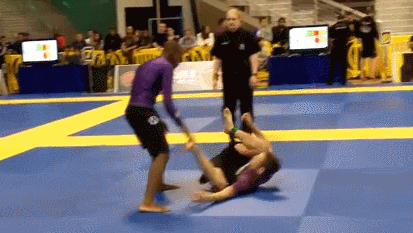A lot of the wall stuff is now very technical.
A lot of the wrestling meta over BJJ meta.
Use of rides. The dagastani hand cuff being the more famous one.
The use of fancy kicking, not just the question mark or the oblique kicks. But just a step up in kicking intelligence.
Calf kicking.
The striking with little gloves. And therefore the covering head movement angles and distances.
This is a good video to showcase the methods being attempted during a sparring match.
Thanks for the response. What I'm exploring is, "is there a difference in the 'innovations' like you mentioned compared to the kind that come to mind in TMA?"
One thing I noticed is the MMA ones you mentioned seem to be of several types: First, adjustments to deal with equipment such as the walls (I'm assuming you're referring to the cage?) and gloves. Second, inserting existing techniques borrowed from different arts such as wrestling or kicking arts. Third, adapting these existing moves to be better used within MMA rules, such as the dagastani hand cuff allowing a wrestling move to be used in conjunction with ground and pound. No doubt there are other examples.
In TMA (I'll use my style as examples) the innovations seem to be more intrinsic concepts of execution: Using the fist vs open hand, vertical punch vs twist, snapping strikes and kicks vs extended thrusting, modifying the fist to stabilze the wrist. Then, there is the whole subject of kata wherein
many applications and concepts were built in by the masters but lost due to uniformed changes by others or thru changing the kata for sport.
Sport karate now uses gloves and pads (which had their own evolution in size) that caused adjustments as well, and rules have changed types of techniques used and not used. This has even found its way into non-sport karate over the past 90 years in some styles. Is this innovated evolution, or just a new specialized form of karate with its own set of goals?
Karate was created as MMA, fusing various Chinese styles with Okinawan fighting styles. Its main purpose was close-in self-defense against common physical attacks and incorporated locks, grabbing and twisting, takedowns, kicks and strikes to all targets. Mass teaching and sport have often changed this basic premise of TMA, creating a parallel art of competitive karate.
I think TMA (non-sport) and MMA are two different things with different purposes and so different in selection of techniques and tactics, despite some commonalities. They are thus hard to compare and correlate. Attempts to do so will always be biased at worst, unsatisfactory at best. Best to view them as two distinct activities, each worthwhile in their own way.



